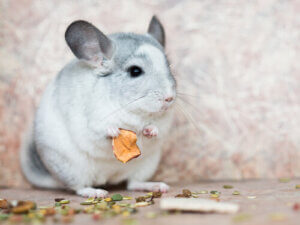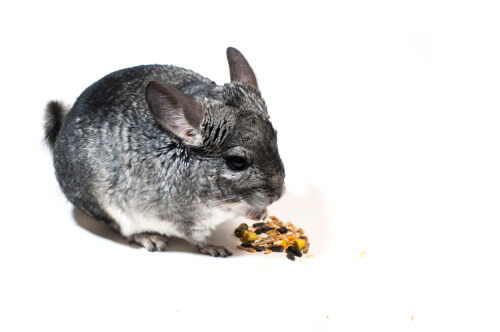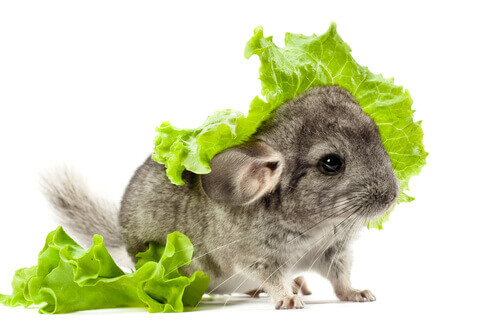Proper Care and Feeding of Chinchilla Pets

Chinchilla pets belong to a group of rodents endemic to the Andes in South America. Greatly prized by the fur industry and driven almost to extinction by it, they have now become popular as pets after the creation of their domestic variety. We’ll tell you more about how to care for chinchilla pets below.
Proper feeding of chinchilla pets
In terms of diet, let’s begin by saying these animals are herbivores and thus, don’t require any meat supplements in their diet. Just as with other exotic animals such as iguanas or parrots, people often make mistakes in the diet of their chinchilla pets and it can lead to health problems.
They mainly eat king grass in their natural habitat, although they also feed on other plants. In fact, they drink dew water and eat cactus, fruit, and even insects when in the Andes.
Their digestive system is similar to that of other grass eaters and they have a highly developed cecum and delicate intestinal flora. This is why it’s vital to provide a source of fiber. In fact, hay should comprise at least three-quarters of the diet.
In addition, they should have a continuous supply of fresh clean water. They don’t drink a lot of it at a time but are used to it being available in their habitat in the form of dew. As you know, this isn’t the case when they live in captivity.

As a general rule, the rest of their diet should include specialized feed and a small percentage of fruit and vegetables. In regard to nutrients, professionals recommend the following percentages:
- 30% of fiber
- 35% of carbohydrates
- 14-16% protein
- 10% wet food
- 6% of minerals
- 3.5% fats
- 4% sugar
Feeding hay to chinchilla pets
As we mentioned above, the diet of this animal must be based mainly on hay given their digestive physiology. This is because they require a large percentage of fiber in order to maintain adequate intestinal motility.
Hay also has a rather necessary outcome on these animals. Just as with other lagomorphs, the teeth of chinchilla grow continuously and must be worn out by chewing on food like hay. They’ll have dental complications otherwise.
Of course, there are solutions such as going to a vet in order to examine their dental state. They may recommend calcium blocks, although proper feeding by including hay in their diet is the best way to prevent any problems.
Hay is merely dried grass so you can use other species such as milk thistle and dandelion, and also include alfalfa. Rotating between different species can make your chinchilla pet’s diet more interesting — both ethologically and in terms of health.
Commercial feed
We must point out that many pet guardians mistakenly feed their animals commercial feeds only. Indeed, these are necessary to their diet, although in lower amounts. No more than a fifth of their total diet, which is about an ounce daily.
You can also introduce some of the products out there that are made especially for rodents but only occasionally. These shouldn’t replace their usual meals.
Note that you must keep commercial feed and other mixtures or nuts separate. Otherwise, the animal will likely become a picky eater and this isn’t healthy for them.

Candy, vegetables, and chinchillas pets
Chinchilla pets require a limited supplement of fruits and vegetables, so about 5% of their total should be enough. Professionals recommend adding fiber by incorporating leafy greens such as chard, spinach, arugula, and also fruit like apples.
They can eat nuts but, as in other species, they must only have them as a special treat and these should be unroasted and unsalted. Preferably, let them get them through environmental enrichment as they really like these kinds of food and won’t mind making an effort to obtain them. Also, only feed these goods to them a couple of times a week and in small amounts.
Consult a breeder or a veterinarian before including anything new in an exotic pet’s diet. This is because some compounds such as chocolate, excess corn, or the bark of some trees can be dangerous.
Thanks for reading.
This text is provided for informational purposes only and does not replace consultation with a professional. If in doubt, consult your specialist.